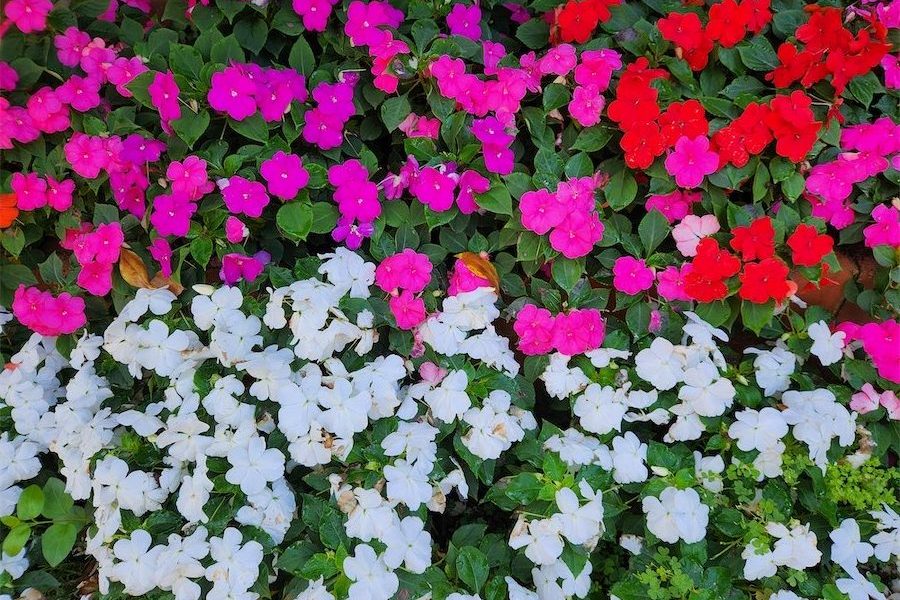THE mere mention of the word hibiscus conjures up images of Hawaiian hula girls with flowers behind their ears.
These sorts of tropical hibiscus certainly grow in our northern climes, but not in the colder southern areas. However, for that tropical feel around the pool, there are three varieties of hibiscus that will grow here. They all love the sun and flower at different times of the year.
Hibiscus moscheutos, often called the hardy hibiscus or Mallow Rose, is in flower now as this photo of the most common variety “Southern Belle”, demonstrates. It was taken in our friend’s garden in Yass.
A vigorous, sturdy multi-stemmed plant growing to two metres, its flowers are similar to hollyhocks. Native of the mid and southern states of North America, another common name is Swamp Hibiscus as it thrives in very wet ground although it will grow well in hard ground with little watering.
There used to be a great display on the nature strip in front of the old Embassy Hotel in Deakin. Mostly the flowers are red; however recent crosses with other hibiscus are resulting in other colours.
THEN there are native hibiscus, with 62 endemic species, most of which grow in the tropical north. The native Alyogyne huegelii or Lilac Hibiscus, despite being indigenous to SA and WA, grows very well here up to two metres, with brilliant lilac flowers up to 12cm in diameter in spring and summer.
LASTLY, Hibiscus syriacus, or Rose of Sharon, can be seen growing in many district gardens. Originally from Iran and the Middle East, it is not known when it was introduced into Western gardens but has been grown in Britain since the 16th century.
A deciduous shrub or small tree with more than 40 named varieties including a few that are usually readily available such as Hibiscus “Blue Bird” with large pale blue flowers; “Ardens” has pale rosy-purple flowers with maroon blotches at the base and “Aphrodite” with deep pink flowers and a deep red centre. There are single and double-flowering varieties. This hibiscus flowers in the autumn, although in recent seasons it seems to flower in late summer. Flowering occurs in the new season’s wood, so a winter prune is recommended to promote new spring growth.
MOST English lavenders have finished flowering and it is time to give them a good haircut, just past the base of the flowers. These dead flower heads have virtually no fragrance and are unsuitable for making pot pourri or sachets.
For this, I suggest planting two areas of lavender; one for the general flower garden and the other for cutting.
The time to cut for the ultimate fragrance is just as the flowers start to open in late spring/early summer. Despite the romance of French lavender, English lavender is the variety mainly used in the French perfume trade. French lavenders generally flower late winter/early spring in Canberra.
IT’S wise to be familiar with the “Bushfire Survival Plan”, available from ACT Shopfronts. This particularly applies to all gardens, especially because many native plants are very flammable with volatile oils and easily burst into flames.
Jottings…
• Nip out the centres of chrysanthemums and reduce the height of Asters or Michaelmas daisies and salvias, even if they have buds or show signs of flowering. This doubles the number of shoots promoting more flowers for a great autumn display for both these plants.
• Don’t overwater tomatoes; a deep watering once a week is sufficient provided they are well mulched. Water at the base, not over the leaves.
• Dead-head agapanthus flowers once flowering is finished to prevent seeds developing. Consider planting sterile agapanthus that does not set seed.
Who can be trusted?
In a world of spin and confusion, there’s never been a more important time to support independent journalism in Canberra.
If you trust our work online and want to enforce the power of independent voices, I invite you to make a small contribution.
Every dollar of support is invested back into our journalism to help keep citynews.com.au strong and free.
Thank you,
Ian Meikle, editor







Leave a Reply